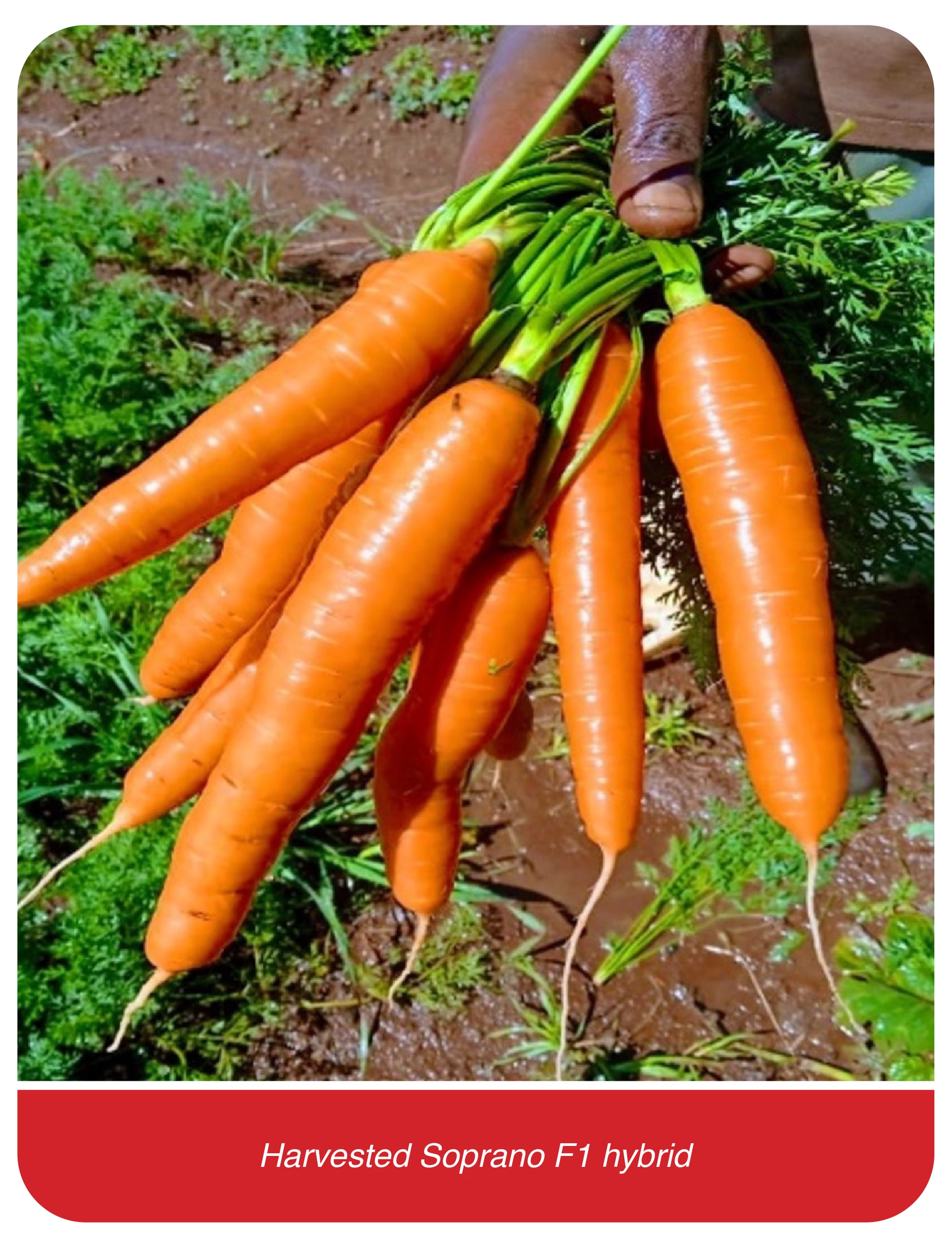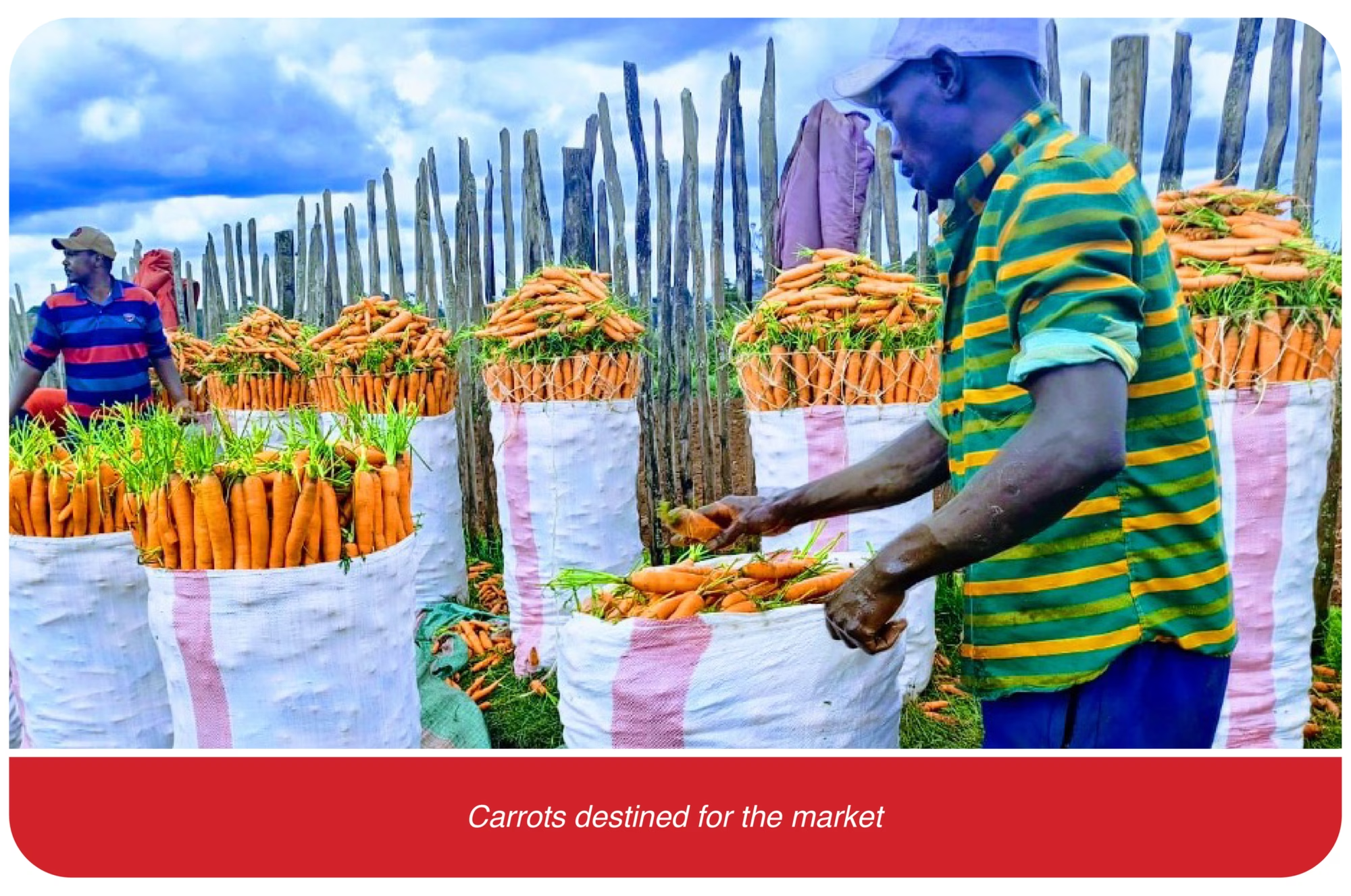The carrot market in Kenya and East Africa generally is 99% composed of open-pollinated varieties, mainly Nantes types. Other crops, most notably cabbage, have largely been converted to hybrid varieties. This has resulted in improved yields, better quality, and more efficient production, all of which mean better returns for producers. The carrot market has been slower to embrace hybrids so trials have begun to identify the best hybrids to use and demonstrate the benefits of changing to these types. Not only growers but market sellers and end consumers also stand to benefit.
One of the first trials was conducted by Charles Ndirangu. Mr. Ndirangu is a commercial farmer who produces around 15 hectares of carrots annually. He is an experienced grower with extensive knowledge of the crop. 200g of Soprano was sown alongside a similar quantity of OP Nantes seed in the trial block. Germination of both was good and early growth as expected. It was towards maturity that the differences became obvious. The OPV started showing symptoms of powdery mildew and Alternaria while the Soprano remained unaffected. These diseases reduce effective leaf area and adversely affect root size and quality.
At harvest, Soprano was seen to produce roots with a deep orange colour and a very sweet taste. There was very little waste, no forked roots, and no shoulder- or internal greening. Leaf attachment was strong, and there was very little breakage of roots during transport. All these factors can be serious problems with OPV types.
The most telling benefit was in the yield achieved. Soprano delivered 10 bags of 90 kg each while the Nantes OPV only managed to deliver 3 bags of the same size.
This very encouraging result clearly shows the potential of hybrid carrot varieties for the Kenyan and East African markets. Thanks to Mr. Ndirangu, Soprano will be one of the region's pioneer varieties. The planned promotions, trials and demonstrations will ensure that the variety is introduced to as many growers as possible.

